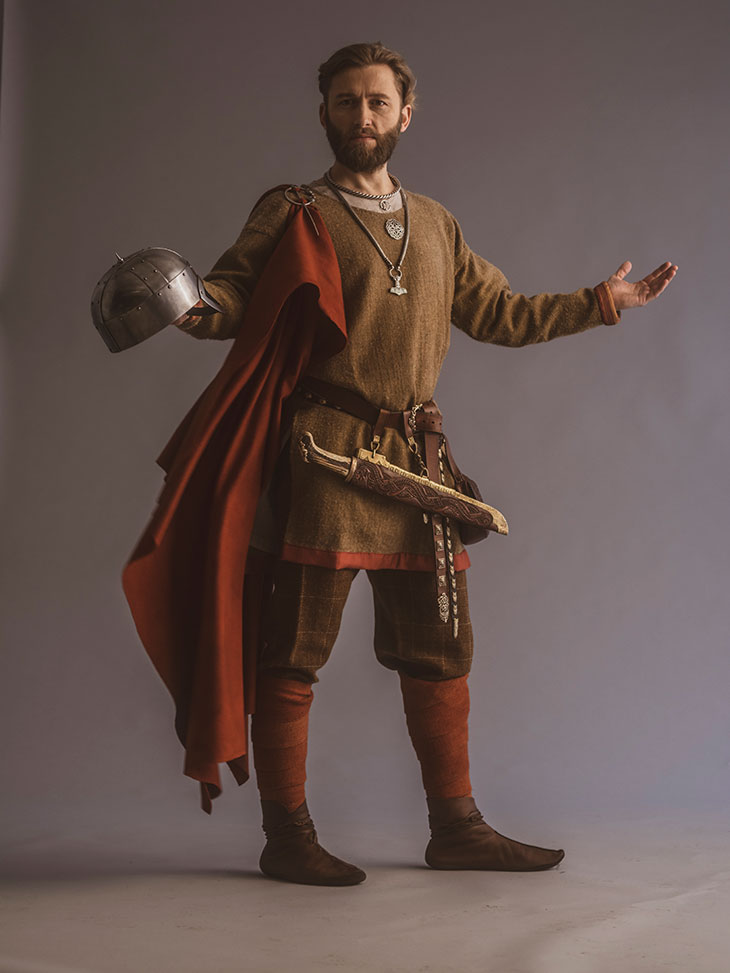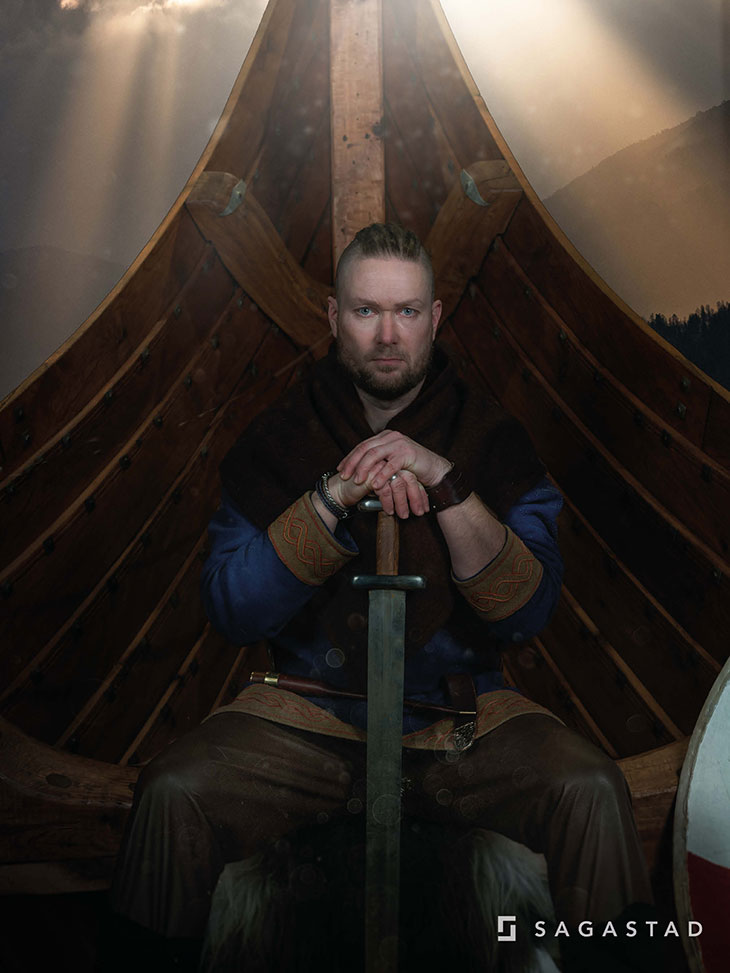King of the Fjord
The size, location and contents of the burial mound at Myklebust, testify that the grave must have belonged to a king or a chieftain. The fjord county with Nordfjordeid as the chieftain’s seat was a very important district in the Viking Age, and several rich discoveries have been made from this time in the area.


Based on the finds in the mound “Rundehågjen”, this grave is dated to the last half of the ninth century. At this time it was King Audbjørn who was king of the Fjords. According to Snorre Sturlason, King Audbjørn died in a battle at sea just off the coast of Nordmøre by the island of Solskjel. The battle of Solskjel was one of the biggest battles in Harald Fairhair struggle to unite Norway into one kingdom. Here Fairhair fought with his army against several kings from Sunnmøre with whom King Audbjørn had joined forces. This was the only way they had a chance to defend their land and win against Fairhair’s big army. It was a hard battle with big losses on both sides, but in the end the kings had to give up for Harald Fairhair’s forces.
King Harald then took power in Sunnmøre (north of Audbjørns kingdom) and put Ragnvald Mørejarl in control of the area, while in Fjordane Audbjørn’s brother, Vemund, took over power. But Ragnvald Mørejarl had scouts looking for Vemund, and the same winter he went to Naustdal where he set fire to the house where Vemund was staying for the night. Vemund died in the fire together with 90 of his men. In the spring that followed, Fairhair sailed to Nordfjord and conquered the Fjords.
The saga together with the finds in the grave point to the fact that it is King Audbjørn who is buried in Rundehogjen. It is also possible that the grave belonged to Vemund, but it is most likely that it was Audbjørn who died in battle who was buried with his ship in the cremation grave. The theory is further supported by the bone analysis performed by Dr. Holck at the Department of Anatomy in Oslo in 1983. The analysis showed that the bones found in the bronze cauldron in the center of the burial mound, showed traces of cuts or lacerations which could indicate death as a result of combat injuries. The bones came from a well-built male person of between 30-35 years, and the age of the person alone also points away from a natural death.
The journey to Valhalla
In the Ynglinge-saga from Snorre’s book of the Norse Kings, it is described how Odin legislated a cremation as the road to Valhalla. “Odin gave laws in the land, the same as before applied to the Aesir, he made, among other things, law that all the dead should be burned, and what they owned, carried on the fire with them. He said that every man should come to Valhalla with such wealth as he had brought with him on the fire; what he had dug into the ground himself, he should also own. The ash was to be carried out to sea or buried in the ground. In remembrance of great men, people were to make a mound, and after all such men as there had been manly courage in, they were to erect monuments; this custom lasted for a long time. ” The next section also describes Odin’s own death. “Odin died of illness in Svitjod, but when death was near, he asked to die by spear death, and said that all men who died in arms should belong to him; he said he would go to the home of the Gods and receive his friends there. Now the Swedes thought he had come to old Åsgard and would live there forever. Then they returned to Odin with faith and prayer. The Swedes often thought he showed up for them before big battles, some he gave victory, others he invited home, they thought they were good conditions, both. Odin was burned when he died, the burning was great and stately. It was a belief they had that the higher the smoke rose in the air, the higher place he got in heaven, the one who was burned, and he became so much richer if it burned much with him. ” The cremation grave at Myklebust has great similarities with the burial customs depicted by Odin and about Odin’s death, and it would be reasonable to think that the burial ritual performed for King Audbjørn was intended to ensure him a magnificent journey to Odin’s table in Valhalla. The custom of burning the ship during the burial was typical of Western Norway in the 8th and 9th centuries, and the grave at Myklebust is both the last and the largest cremation grave we know from the Viking Age. As Christianity was introduced, cremation graves were forbidden and was seen as a pagan custom.



